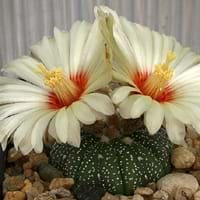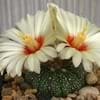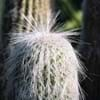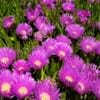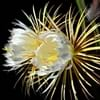Life Span
Perennial
Perennial
Type
Cactus, Flowering Plants
Vegetable
Origin
Mexico, Texas
Hybrid origin, Mexico, Central America, South America
Types
Not Available
Not Available
Habitat
Desert, In desert grasslands, Rocky areas
Coastal Regions
USDA Hardiness Zone
13-15
11-15
Sunset Zone
21,22,23,24
A1, A2, A3, H1, H2, 1a, 1b, 2a, 2b, 3a, 3b, 4, 5, 6, 7, 8, 9, 10, 11, 12, 13, 14, 15, 16, 17, 18, 19, 20, 21, 22, 23, 24
Habit
Oval or Rounded
Upright/Erect
Minimum Height
Not Available
Minimum Width
Not Available
Flower Color
Red, Yellow
Yellow
Flower Color Modifier
Not Available
Bicolor
Fruit Color
Green, Pale Pink
Red
Leaf Color in Spring
Not Available
Green, Dark Green
Leaf Color in Summer
Not Available
Green, Dark Green
Leaf Color in Fall
Not Available
Green, Dark Green
Leaf Color in Winter
Not Available
Green, Dark Green
Leaf Shape
Not Applicable
Ovate
Plant Season
Not Available
Spring, Summer, Fall
Sunlight
Not Available
Full Sun
Growth Rate
Not Available
Fast
Type of Soil
Not Available
Loam, Sand
The pH of Soil
Not Available
Neutral
Soil Drainage
Not Available
Well drained
Bloom Time
Not Available
Indeterminate
Repeat Bloomer
Not Available
Yes
Tolerances
Not Available
Drought
Where to Plant?
Ground
Container, Ground
How to Plant?
Seedlings, Transplanting
Grafting, Seedlings
Plant Maintenance
Medium
Medium
Watering Requirements
Needs very little water
Needs more water during establishment
In Summer
Lots of watering
Lots of watering
In Spring
Moderate
Moderate
In Winter
Average Water
Average Water
Soil pH
Not Available
Neutral
Soil Type
Not Available
Loam, Sand
Soil Drainage Capacity
Not Available
Well drained
Sun Exposure
Not Available
Full Sun
Pruning
Remove damaged leaves, Remove dead branches, Remove dead leaves
Pinch or prune as they grow to promote branching and bushiness
Fertilizers
All-Purpose Liquid Fertilizer
14-14-14 Fertilizer, Compost
Pests and Diseases
Dry root rot, Root mealy bugs
Anthracnose, Aphids, Red blotch, Rust
Plant Tolerance
Drought
Heat Tolerance, Salt and Soil Compaction
Flower Petal Number
Not Available
Single
Showy Fruit
Not Available
Yes
Edible Fruit
Not Available
Yes
Fragrant Flower
Not Available
Yes
Fragrant Fruit
Not Available
Yes
Fragrant Leaf
Not Available
Yes
Fragrant Bark/Stem
Not Available
Yes
Showy Foliage
Not Available
No
Showy Bark
Not Available
No
Foliage Texture
Bold
Medium
Foliage Sheen
Not Available
Matte
Invasive
Not Available
No
Self-Sowing
Not Available
Yes
Attracts
pollinators
Aphids, Not Available, Squirrels
Allergy
Not Available
Stomach pain, Vomiting
Aesthetic Uses
Beautification, Showy Purposes
Used in parkland
Beauty Benefits
Not Available
Anti-ageing, Blackheads, Reduce Bruises
Environmental Uses
Air purification
Shadow Tree, Soil protection
Medicinal Uses
Not Available
Dehydration, Diabetes, Diarrhea, Nutrients, Weight loss
Part of Plant Used
Flowers
Fruits
Other Uses
Used as Ornamental plant
Application in Handicrafts, Food for animals, Showy Purposes
Used As Indoor Plant
Yes
No
Used As Outdoor Plant
Yes
Yes
Garden Design
Not Available
Edible, Herb, Vegetable
Botanical Name
Astrophytum asterias
Manilkara zapota
Common Name
Star Cactus, Sand Dollar Cactus
sapodilla , chikoo, Sapota
In Hindi
रेत डॉलर कैक्टस
चीकू
In German
Sand Dollar Cactus
Breiapfelbaum
In French
Sand Dollar Cactus
Sapotillier
In Spanish
Sand Dollar Cactus
chicle
In Greek
Sand Dollar Cactus
sapodilla
In Portuguese
Cacto do dólar de areia
sapodilla
In Polish
Sand Dollar Cactus
Pigwica właściwa, sapodilla
In Latin
Sand Dollar Cactus
sapodilla
Phylum
Magnoliophyta
Magnoliophyta
Class
Magnoliopsida
Magnoliopsida
Order
Caryophyllales
Ericales
Family
Cactaceae
Sapotaceae
Clade
Angiosperms, Core eudicots, Eudicots
Angiosperms, Asterids, Eudicots
Subfamily
Cactoideae
Sapotoideae
Difference Between Sand Dollar Cactus and Sapodilla
If you are confused whether Sand Dollar Cactus or Sapodilla are same, here are some features about those plants to help you choose better. Many people think that these two plants have the same characteristics, but one can see Sand Dollar Cactus and Sapodilla Information and learn more about it. Fertilizers required for proper growth of Sand Dollar Cactus are All-Purpose Liquid Fertilizer, whereas for Sapodilla fertilizers required are 14-14-14 Fertilizer and Compost. Hence, one should know the basic difference between Sand Dollar Cactus and Sapodilla if you are planning to have them in your garden to enhance its beauty.
<
Flowering PlantsImportance of Sand Dollar Cactus and Sapodilla
Want to have the most appropriate plant for your garden? You might want to know the importance of Sand Dollar Cactus and Sapodilla. Basically, these two plants vary in many aspects. Compare Sand Dollar Cactus and Sapodilla as they differ in many characteristics such as their life, care, benefits, facts, etc. Every gardener must at least have the slightest clue about the plants he wants to plant in his garden. Compare their benefits, which differ in many ways like facts and uses. The medicinal use of Sand Dollar Cactus is Not Available whereas of Sapodilla is Dehydration, Diabetes, Diarrhea, Nutrients and Weight loss. Sand Dollar Cactus has beauty benefits as follows: Not Available while Sapodilla has beauty benefits as follows: Not Available.
Compare Facts of Sand Dollar Cactus vs Sapodilla
How to choose the best garden plant for your garden depending upon its facts? Here garden plant comparison will help you to solve this query. Compare the facts of Sand Dollar Cactus vs Sapodilla and know which one to choose. As garden plants have benefits and other uses, allergy is also a major drawback of plants for some people. Allergic reactions of Sand Dollar Cactus are Not Available whereas of Sapodilla have Stomach pain and Vomiting respectively. Having a fruit bearing plant in your garden can be a plus point of your garden. Sand Dollar Cactus has no showy fruits and Sapodilla has showy fruits. Also Sand Dollar Cactus is flowering and Sapodilla is not flowering . You can compare Sand Dollar Cactus and Sapodilla facts and facts of other plants too.
